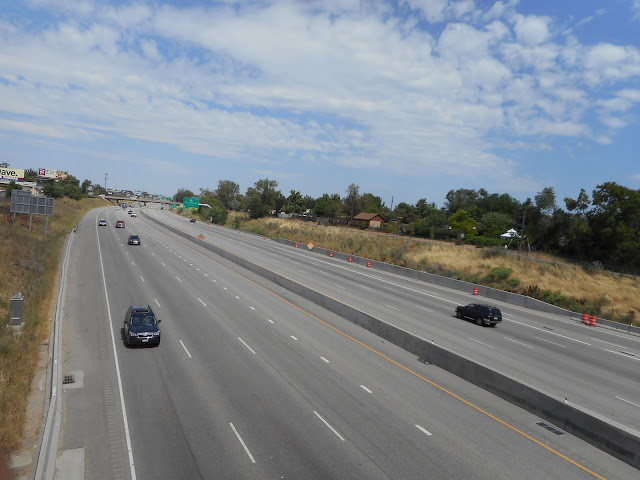The south end of I-15 through Layton City.
BESIDES the opening of Hill Air Force Base in the 1940s, I-15’s opening through Layton City in the 1960s is another one of the town’s blockbuster moments.
After three years of work, I-15 from south Layton to Ogden opened on Nov. 23, 1966. A huge advantage with this section meant that Main Street (Highway 91) would no longer be so congested with commuters during shift changes at Hill Air Force Base.
Some 15,000 workers were employed at Hill AFB back then.
“The people of Ogden and vicinity will welcome the elimination of one of Utah’s most serious traffic bottlenecks,” Ernest H. Balch, Chairman of the Utah State Road Commission, said of I-15’s completion.
Work on I-15 from Ogden to Layton began in 1964 and required three years. The six-mile segment of I-15 through Layton to Sunset alone cost $2.13 million
Besides clearing up traffic congestion, the presence of the freeway meant another big change: suburban development was now encouraged by a shortened travel time to Ogden and Salt Lake City, Utah’s largest cities at the time.
“The communities along the freeway's route rightly envisioned a new incentive for growth,” Glen M. Leonard stated in his book, “A History of Davis County.”
“The communities along the freeway’s route rightly envisioned a new incentive for growth,” Leonard wrote. “Interstate 15 made the greatest difference in the Centerville, Farmington, and Kaysville areas, which had lagged behind other parts of the county because of their distance from both Ogden and Salt Lake City.”
Layton City also experienced other changes because of the new interstate highway. Some homes had to be moved or demolished to make room for the six-lane highway.
Gordon Avenue was particularly changed forever, by being disconnected by I-15 and split in an eastern and a western section.
When two new bridges on I-15 over Hill Field Road were built in 2015.
(UDOT photograph)
When two new bridges on I-15 over Hill Field Road were built in 2015.
(UDOT photograph)
In addition, Layton City itself seemed forever split by the busy interstate slicing through town. There was now the west side of I-15 and the east side of I-15 in the city.
The I-15 route north of Layton often followed the abandoned Bamberger Railroad route.
On Dec. 12, 1976, the section of I-15 from the Box Elder-Weber County line to Perry was completed after more than four years of work. This meant I-15 was now continuous from Layton to southern Box Elder County.
However, the Lagoon to Layton section of the interstate was the last section finished in the Ogden area.
The widening and resurfacing of the existing section of Highway 91 from Layton to Lagoon was not open until 1977 through a $10 million project. This finally meant uninterrupted freeway travel existed between Juab County on the south and Box Elder County on the north. Future projects would expand the freeway both north and south.
The freeway’s presence also eventually spurred economic growth in Layton, including the addition of the Layton Hills Mall in 1980, boasting convenient I-15 access.
Through the decades, the access to I-15 also helped the development of Layton’s famed “Restaurant Row.” It also meant that home furnishings giant RC Willey, would eventually purchase land at the north end of Layton, near I-15, primarily because of the convenient freeway access offered there, for when it closes its original Syracuse location, in favor of Layton.
SOURCES: Deseret News Archives, Ogden Standard-Examiner Archives.





No comments:
Post a Comment